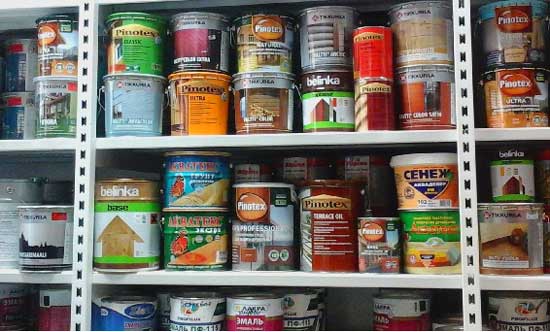Wood is a valuable, natural building material. The buildings made from it have a good microclimate, an optimal level of humidity, they are warm and comfortable in winter, and cool enough in summer.
But the material is organic, and therefore various biological factors pose a danger to it:
pests, bacteria, mold, fungi and more. Therefore, the tree needs reliable protection.
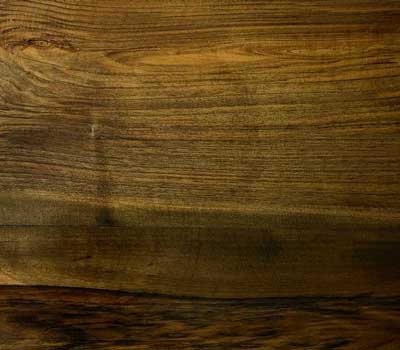 In housing construction, a number of measures have been developed to prevent damage to wooden structures.
In housing construction, a number of measures have been developed to prevent damage to wooden structures.
This includes procedures designed to reduce their exposure to moisture - a competent, blind area and drainage system. Only high-quality, perfectly dried wood should go into business. But drying alone is not enough.
Wood is a fairly porous material that can absorb moisture during the construction process, or later, during operation.
One of the effective ways to protect the material is to treat it with various special agents, including wood preservative. This group of drugs includes special chemicals that are detrimental to various harmful bacteria.
Tree protection
 On store shelves you can find many drugs related to this type, both domestic and foreign. Which antiseptic to choose for your own home so that it is reliably protected in all respects? To do this, it must have antimicrobial, insecticidal and antifungal effects. A good quality drug should not only be harmful to pathogens, but also absolutely safe for human health.
On store shelves you can find many drugs related to this type, both domestic and foreign. Which antiseptic to choose for your own home so that it is reliably protected in all respects? To do this, it must have antimicrobial, insecticidal and antifungal effects. A good quality drug should not only be harmful to pathogens, but also absolutely safe for human health.
It does not have an unpleasant pungent odor, and the wood treated with it provides protection from ultraviolet radiation and moisture. At the same time, the operational properties of wood should not suffer, as well as the metal elements adjacent to it, if any, should be subjected to corrosion. An important role in the successful choice is played by the durability of the active substance. Modern drugs guarantee protection from 8 to 35 years maximum.
What are these substances? These are special water-repellent compositions and, the purpose of which is to protect wooden materials from all kinds of living organisms that can feed on them: microbes, fungi and insects. It is always better to pre-treat the building material. But if the infection did occur, a suitable high-quality drug may well stop the process.
Antiseptics: types
The division of drugs into various types occurs on the basis of their constituent components:
water soluble
 They are used in cases where the treated surface will not be exposed to moisture in the future. Otherwise, the coating may simply wash off (dissolve) over time, leaving the material unprotected, thereby reducing its service life. When choosing this type of antiseptic, it should be remembered that after applying the composition, for a certain time, it must dry well.
They are used in cases where the treated surface will not be exposed to moisture in the future. Otherwise, the coating may simply wash off (dissolve) over time, leaving the material unprotected, thereby reducing its service life. When choosing this type of antiseptic, it should be remembered that after applying the composition, for a certain time, it must dry well.
Oily
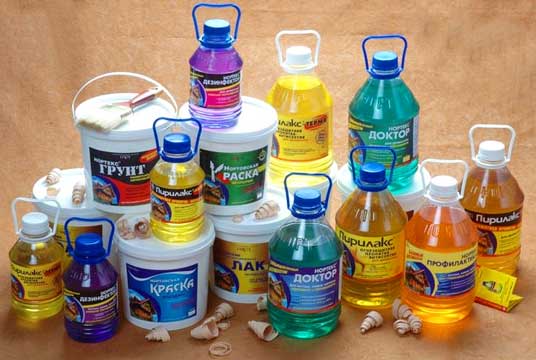 These funds are used in cases where it is required to protect the tree from moisture.
These funds are used in cases where it is required to protect the tree from moisture.
This is a popular product with a specific smell, which has in its composition shale, coal or anthracene oil. Under their influence, wood fibers darken. Not suitable for indoor use due to persistent odor. After treatment, it is not washed off with water, does not have a negative effect on metal parts.
It is usually used for wooden products that are constantly in the air. This, railway sleepers and so on. The downside of the tool is its flammability.
Organic
 Such funds are used quite rarely, as they are distinguished by a number of disadvantages. In their composition, they have a certain amount of cuprum pentachlorophenol naphthenate (containing copper), and are able to penetrate deep into the wood, significantly strengthening it.
Such funds are used quite rarely, as they are distinguished by a number of disadvantages. In their composition, they have a certain amount of cuprum pentachlorophenol naphthenate (containing copper), and are able to penetrate deep into the wood, significantly strengthening it.
But in addition to a fairly high toxicity, these antiseptics endow the processed materials with the following properties:
- Difficult bonding due to a significant reduction in surface porosity;
- Coloring products and blanks in green.
Usually products containing organic solvents are preferred for outdoor use. But it must be borne in mind that they are dangerous for the metal, as they contribute to the occurrence of corrosive processes.
Combined
Which antiseptic do you prefer? How to make a choice?
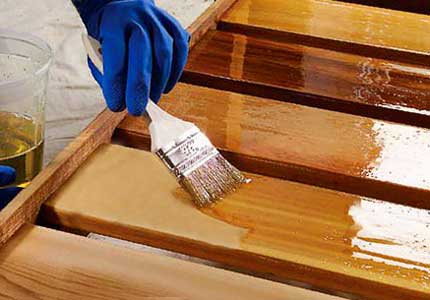 In order to choose the composition that is optimal in quality, several important factors must be taken into account. This is the density and porosity of the material, its ability to absorb, the type or type of wood.
In order to choose the composition that is optimal in quality, several important factors must be taken into account. This is the density and porosity of the material, its ability to absorb, the type or type of wood.
By durability, tree species are usually divided into the following groups:
- Persistent. They are characterized by resistance to decay processes, reliability, strength and durability. These include oak, pine, larch core and ash.
- Medium resistant. They have a lower resistance to decay processes. These include larch sapwood, spruce, cedar and fir.
- Low resistance. They are not as durable and reliable as the two types already noted. These include sapwood of oak, maple, beech, birch, elm core.
- Unstable. These are those varieties of wood that are more susceptible to negative putrefactive changes than others. These include alder, birch core, linden sapwood, aspen.
- Easily impregnated - these species include birch sapwood, beech and pine.
- With moderate ability - these include aspen, pine core, sapwood of oak, maple and linden.
- Hard-to-impregnate - spruce, core of ash, oak and birch.
The use of antiseptics: classification by purpose

Strapping and antiseptic treatment
All drugs can be divided into two conditional types, depending on their main purpose:
- Preventive. They are used at the very beginning of construction or even before the start of the process. Processing with such material is quite acceptable to begin immediately after the necessary lumber has been purchased. It will be possible to start its priming and painting only when one or two layers of the drug are completely absorbed into the surface of the tree.
- Therapeutic. They are resorted to in cases where problems with the material have already appeared, and they need to be eliminated. For example, wood has undergone putrefactive processes, or has been affected by microorganisms and insects - these are the tools that can help it. Therapeutic antiseptics can also be used as preventive ones, in cases where it is known in advance that the operating conditions of the potential design will be unfavorable. For example, it will be high humidity.
Antiseptic solutions: classification by application
The most suitable composition of the antiseptic is selected depending on the type of tree, and based on the purpose of the material. The processing of wooden products also depends on this. According to the method and scope of application, all antiseptics can be conditionally divided into two types.
 For outdoor work
For outdoor work
External preparations are substances that are used to protect wooden parts that are exposed to the harsh conditions of the street.
Since these objects are actually in the open air, they quite often experience the influence of the environment: ultraviolet radiation, precipitation, sudden changes in temperature, and so on.
Therefore, the external antiseptics used in this case must be resistant and of high quality, providing reliable protection.
They often have a sharp specific smell, which can only be removed after the treated material has completely dried. This may take one to two months.
These substances perfectly tolerate solar radiation, the negative effects of high humidity, but they are not intended for interior work.
They, in turn, are divided into two groups:
- impregnations - these compositions are designed for deep penetration into the tissues of the destruction of mold, insects and fungi in them;
- finishing coatings - designed to protect the impregnating layer from weathering. They do not penetrate deep into the fibers, but instead they form a special protective film on the surface of the treated material.
Both finishing preparations and impregnation antiseptics can be used separately, but often owners choose combined products that have different functions.
For interior work
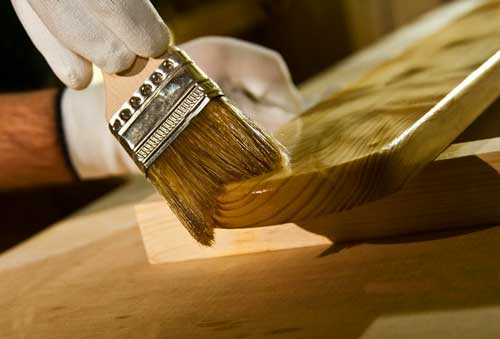 These compositions are characterized by one feature: after processing by them, a microfilm is formed on the surface of the material. It seems to clog toxic substances, not allowing them to erode. This is very important for the substances used for, since not only the safety of wood is ensured, but also the safety for the health of people in the room. These funds are quite stable, and do not need regular subsequent application.
These compositions are characterized by one feature: after processing by them, a microfilm is formed on the surface of the material. It seems to clog toxic substances, not allowing them to erode. This is very important for the substances used for, since not only the safety of wood is ensured, but also the safety for the health of people in the room. These funds are quite stable, and do not need regular subsequent application.
The specific type of drug is selected from the purpose of the premises being treated. If an antiseptic is chosen for surface treatment in a room where high temperature and extremely high humidity are expected, products for saunas and baths are suitable. It is necessary to study the performance characteristics of the drug indicated in its passport. It is better to buy drugs from reputable companies in order to avoid unpleasant surprises.
Features of antiseptic treatment
In order for the wood processing to be durable and effective, simple but important rules should be observed:

Popular Representatives
